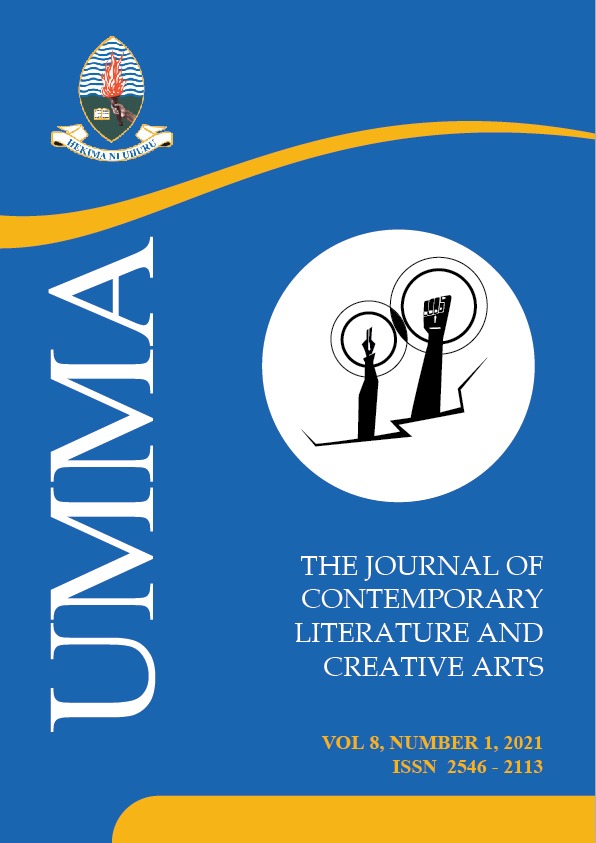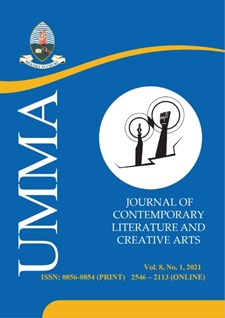Messenger and Pupils of Death in Samuel Richardson ' s Clarissa
Abstract
AbstractThis article looks at the didacticism associated with death that Samuel Richardson
carefully crafted in Clarissa at a time when religion very much had a stronghold
on the psyche of the society reading the work, but which still resonates with the
contemporary world ' s religious informed good dying and bestial dying, which
the Tom captures in connection with the varying deaths of characters in the
epistolary novel. The article demonstrates how the novel uses these characters to
pass on the didacticism on good/evil living and attendant dying. Its argument is
that the novel encourages people to live well to die well. In this regard, the
novel ' s themes emerges to be timeliness and relevant to the contemporary period.
Key words:
Didacticism, Good and Bestial Dying, Richardson, 18th Century Novel
References
References
Damrosch, L. (1985). God ' s plot and man ' s stories: Studies in the fictional imagination
from Milton to Fielding, Chicago: University of Chicago Press.
Doody, M. A. (1974) A natural passion: A study of the novels of Samuel Richardson.
Oxford: Clarendon Press.
Eagleton, T. (1982). The Rape of Clarissa: Writing, Sexuality, and Class Struggle in
Samuel Richardson. Minneapolis: University of Minnesota Press.
Messenger and Pupil of Death in Samuel Richardson ' s Clarissa
UMMA, Volume 1, 2020 85
Lams, V. J. (2001). Clarissa ' s marrator. New York: Peter Lang Publishing, 2001
Norman, T. N. (1999). Names Through Ages. New York: Berkley Books.
Oxford Talking Dictionary, Oxford: The Learning Company Inc. 1998
Porter, T. (1999). Georgian libertinism and the plays and novels of Henry Fielding.
Montreal: McGill-Queen ' s University Press.
Richardson, S. (1985). Clarissa, or the history of a young lady. London: Penguin
Books.
Richetti, J. (1999) The English Novel in History, 1700-1780. London: Routledge, 1999
Watt, I. P. (1957). The Rise of the Novel: Studies in Defoe, Richardson, and Fielding.
Berkeley: University of California Press, 1957
Watt, I. P (1949) "The Naming of Characters in Defoe, Richardson and Fielding."
The Review of English Studies, Volume 25, Issue 100 (Oct., 1949), 322-338
Wilt, J. "He Could Go no Further: A Modest Proposal about Lovelace and
Clarissa," PMLA, 1977, 19-32
Van Ghent, D. (1953). The English novel: Form and function. New York: Holt,
Rinehart and Winston.
Downloads
Published
Issue
Section
License
- Authors retain copyright and grant the journal right of first publication with the work simultaneously licensed under a Creative Commons Attribution License that allows others to share the work with an acknowledgement of the work's authorship and initial publication in this journal.
- Authors are able to enter into separate, additional contractual arrangements for the non-exclusive distribution of the journal's published version of the work (e.g., post it to an institutional repository or publish it in a book), with an acknowledgement of its initial publication in this journal.
- Authors are permitted and encouraged to post their work online (e.g., in institutional repositories or on their website) prior to and during the submission process, as it can lead to productive exchanges, as well as earlier and greater citation of published work (See The Effect of Open Access).



